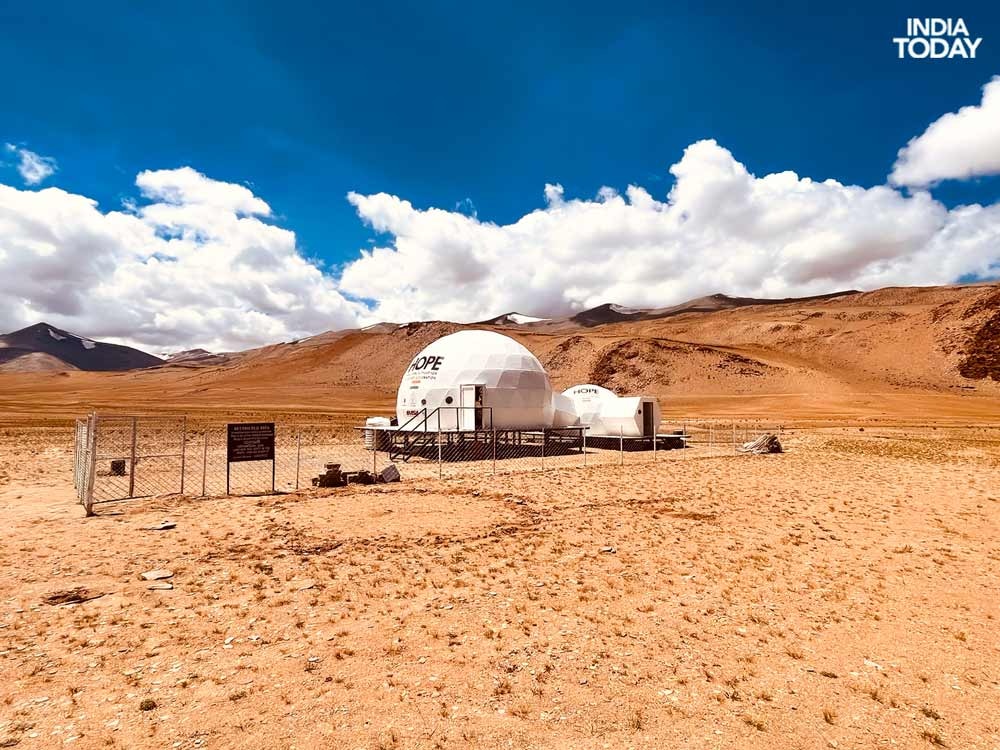
The temperature was rising as the Sun began scorching the rugged terrain, turning it into a shimmering mirage, and it was just fifteen minutes past 9 am.
A group of men had gathered outside a dome-shaped pod in the middle of what was once a glacial lake, turned into a desolate world of extremes.
Two knocks on the door, and the anticipation grew as the group waited for the emergency doors to unlatch from the inside. The third knock finally led to the moment, and the exit gate opened. Two fully suited crew members stepped out of their pod. They were back on Earth.
This is not a fictional story.
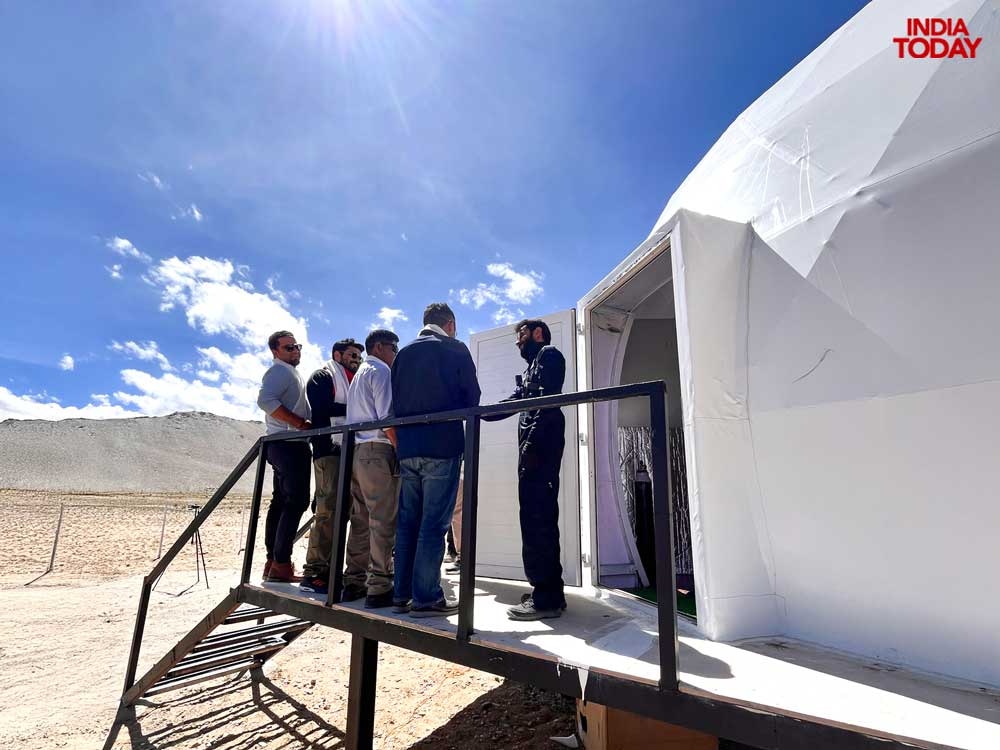
In the stark expanse of Ladakh’s Tso Kar valley, a milestone in India’s space ambitions quietly unfolded. Two crew members, sealed inside, were part of India’s first analog mission, an exercise simulating life on the Moon and Mars. The mission was spearheaded by private space research firm Protoplanet, in collaboration with the Indian Space Research Organisation (Isro), the US-based Mars Society, and Mahindra.
For 10 days, the pair lived in total isolation inside the Himalayan Outpost for Planetary Exploration, a.k.a Hope, a dual-module habitat replicating the conditions astronauts might face beyond Earth. When they finally emerged, it was the first time in 10 days they had seen another human face.
IndiaToday.in was given exclusive access to this restricted base created from scratch in a remote corner of Ladakh known for its proximity to early Mars.
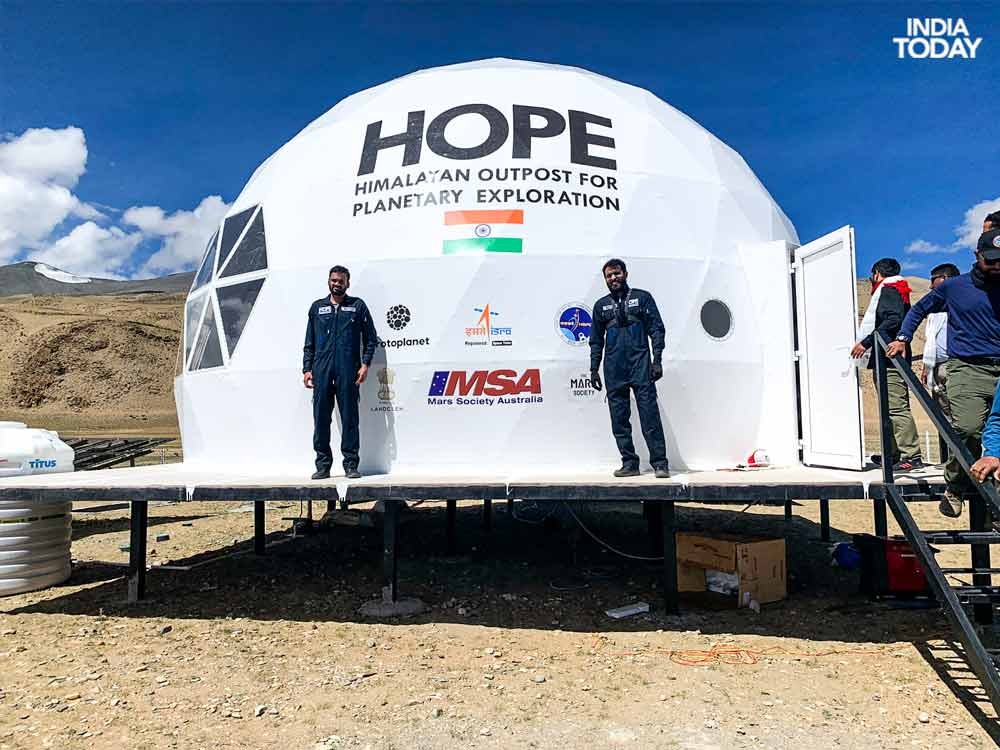
A NEW HOPE
The idea took root in the mind of Dr. Siddharth Pandey, an engineer who has worked across multiple countries, including with NASA. During one of his expeditions in Ladakh, accompanied by a group of scientists and researchers, he began envisioning a team that could explore what it truly takes to make life interplanetary. In a fitting twist, at the time he was studying the very microorganism believed to have kick-started life on Earth.
In 2024, he collaborated with the US-based Mars Society to establish Protoplanet, an organisation designed to bring together people from varied disciplines under one umbrella. The goal is to conduct analog missions that generate data and insights on how extreme environments affect microbes, the building blocks of life, and, eventually, the human mind and body.
The vision extends beyond preparing astronauts alone. “The idea is to provide sensitisation not just to the selected people for space travel, but also to the teams building the machines that will carry humans to space and beyond,” Siddharth explained. “It is very important to train the backend team on how everything changes when a human crew is involved in a space mission.”
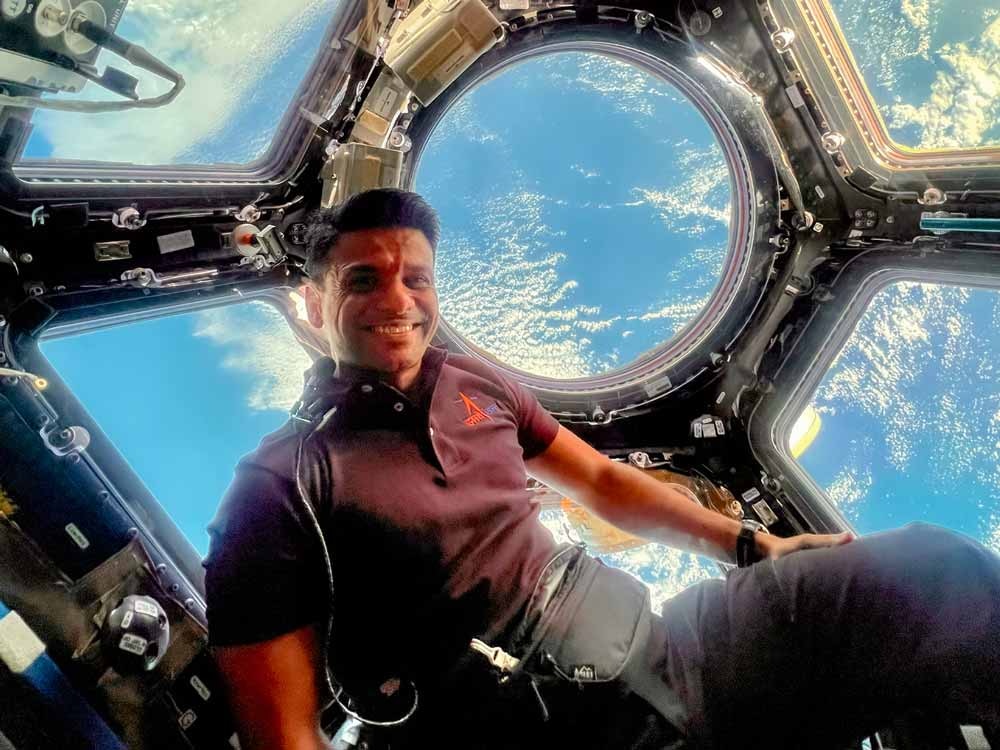
Credit : AXIOM SPACE
While space agencies can place astronauts in hyperbaric chambers, which increases atmospheric pressure and provides pure oxygen for short durations, analog missions immerse them in real-world extreme environments, pushing both body and mind to adapt. These stress tests help refine the protocols needed for long-duration human spaceflight.
“We are offering an extreme environment-based analog,” Dr. Siddharth told IndiaToday.in. “By putting people into these conditions, we can study how they adapt, how the human body changes, and how to improve systems and procedures for future missions.
Isro’s Human Space Flight Centre, responsible for training India’s Gaganyaan astronauts, saw it as a great opportunity and joined the collaboration. Thus began the analog mission.
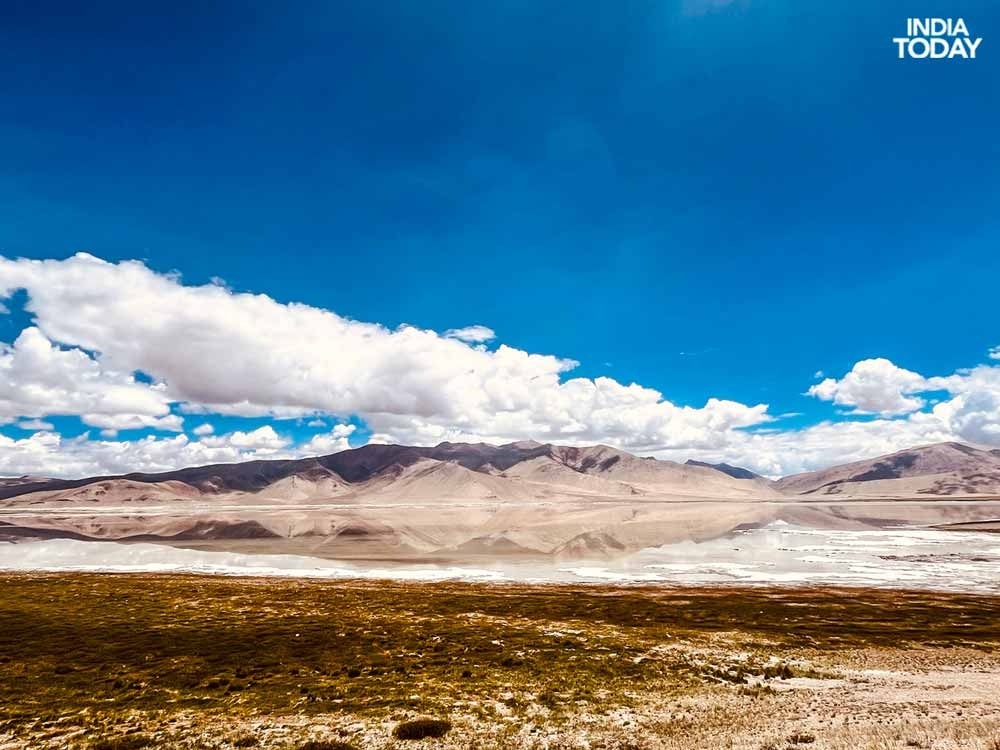
AN EARLY MARS ON EARTH
Tso Kar valley in Ladakh is considered one of the most optimal sites on Earth to mimic early Mars due to its unique environmental parallels. At 4,530 metres above sea level, it features high ultraviolet radiation, low atmospheric pressure, and extreme cold temperatures, all critical aspects of the Martian environment.
The valley also has saline permafrost soils and a dry, desert-like climate, closely resembling ancient Martian landscapes that were cold, salty, and arid.
This high-altitude, cold desert is isolated and experiences large temperature swings, oxygen scarcity, and minimal humidity, recreating the physical and physiological challenges astronauts would face on Mars.
The terrain’s saline ground and rocky landscape serve well for testing spaceflight equipment, bioscience experiments, and human adaptability under stress. Such natural analogs allow researchers to validate mission protocols, assess equipment durability, and monitor crew health in conditions that meaningfully simulate early Mars, making Tso Kar valley an ideal planetary testbed.
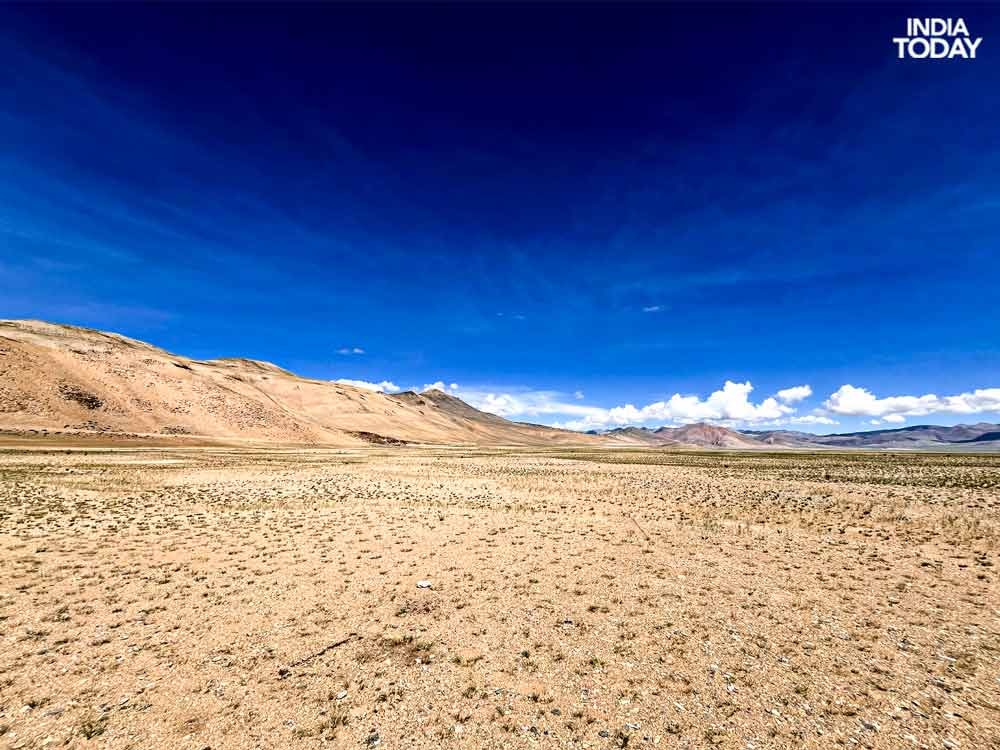
BUILDING A MARS HAB
The Hope habitat consists of two modules aptly named Phobos and Deimos after the two Martian moons. Entry into the habitat is through the smaller of the two modules, which is connected to the larger one via a tunnel.
The geodesic dome, a partial-spherical structure composed of a network of triangle, Phobos spans 8 metres in diameter, while Deimos is more compact at 5 metres, with a height of up to 18 feet.
Both domes are made of a special polymer with insulated walls, and the windows are constructed from reinforced fiberglass. The dome’s height difference was intentionally designed to mimic gravity and enable the easy flow of water, reducing the need for power-intensive pumping.
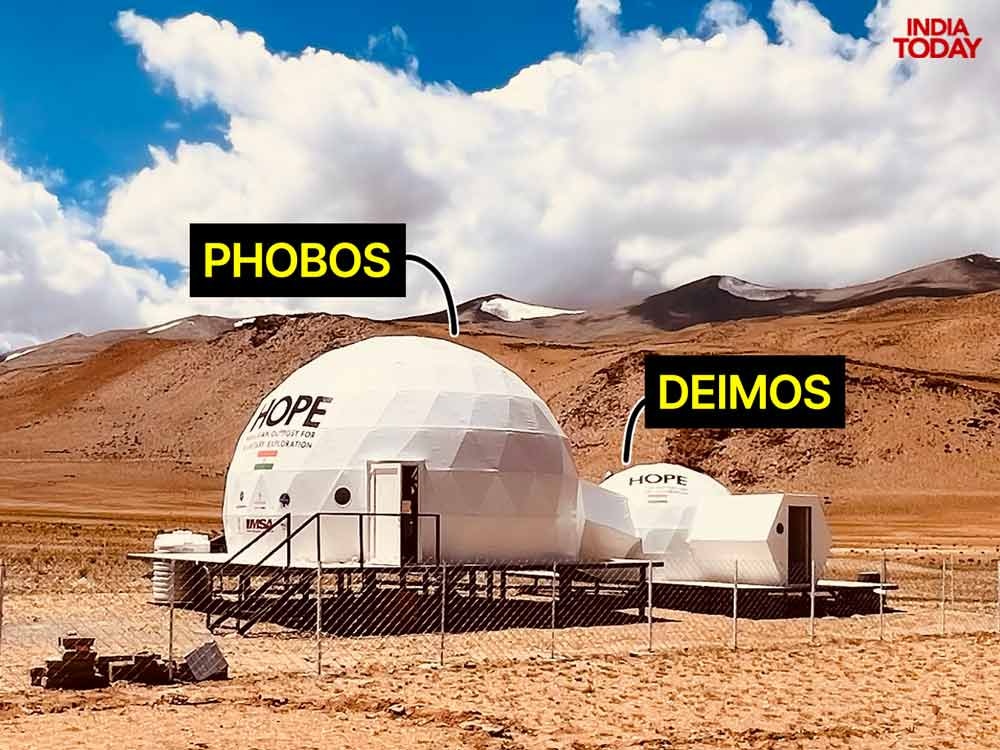
“Once we decided on it being a dome, the next part was to make it habitable. Three major considerations were power, water plumbing, and communications,” said Sunil Meka, Extreme Environment Systems Lead, whose team led the design and construction of the habitat.
The smaller module houses a pressurised airlock section, simulating future Moon bases where astronauts will need to depressurise after extra-vehicular activities (EVAs). It also contains a compact bathroom connected to a biodigester that treats human waste, cleaning up to 90% of it.
The pathogen-free water exiting the system can be reused for farming and plantations.
The larger dome, Phobos, is where the crew lives, works, stores samples, and exercises to maintain fitness. It is divided into three sections, one for sleeping quarters and workstations, a second for the kitchen, and a third dedicated to preparing for EVAs and handling collected samples.
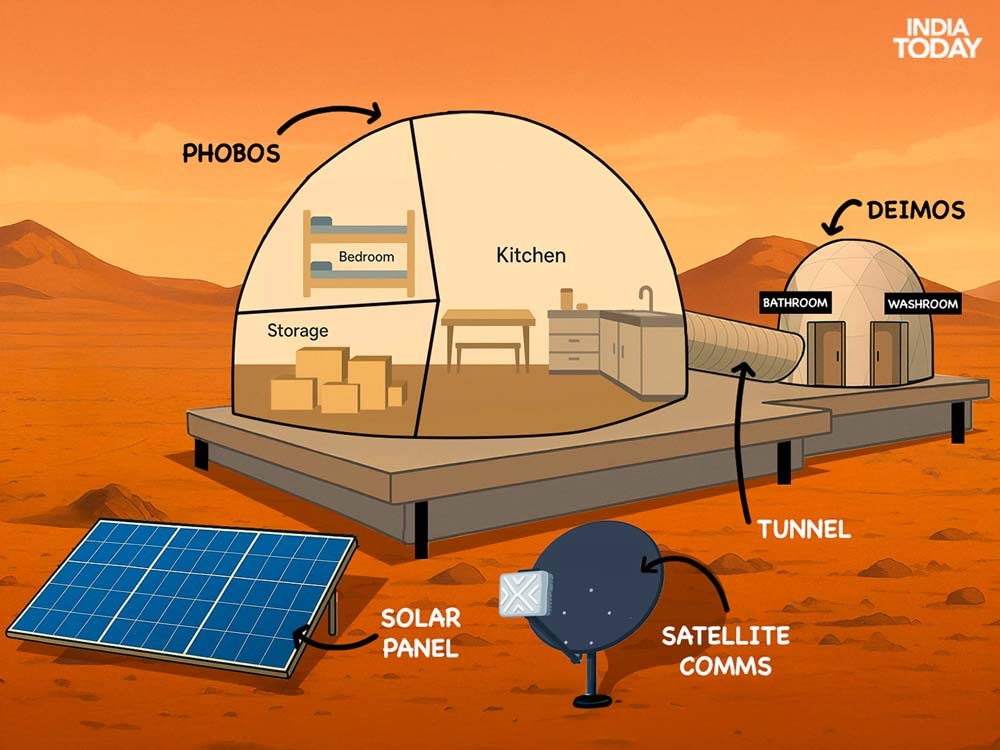
Generative AI : Vani Gupta / India Today
Power for the station is supplied by solar panels with battery storage. The analog mission was provisioned with 80 litres of drinking water and 2,500 litres of daily use water for 10 days, requiring strict rationing, a factor that added psychological strain.
Astronauts even had to time water use for washing hands and other morning routines. Baths were off the table for the entire mission.
“The idea was that the habitat had to be modular and modern in nature,” Sunil added, noting that the team had calculated every watt of power the analog astronauts would need for their 10-day stay.
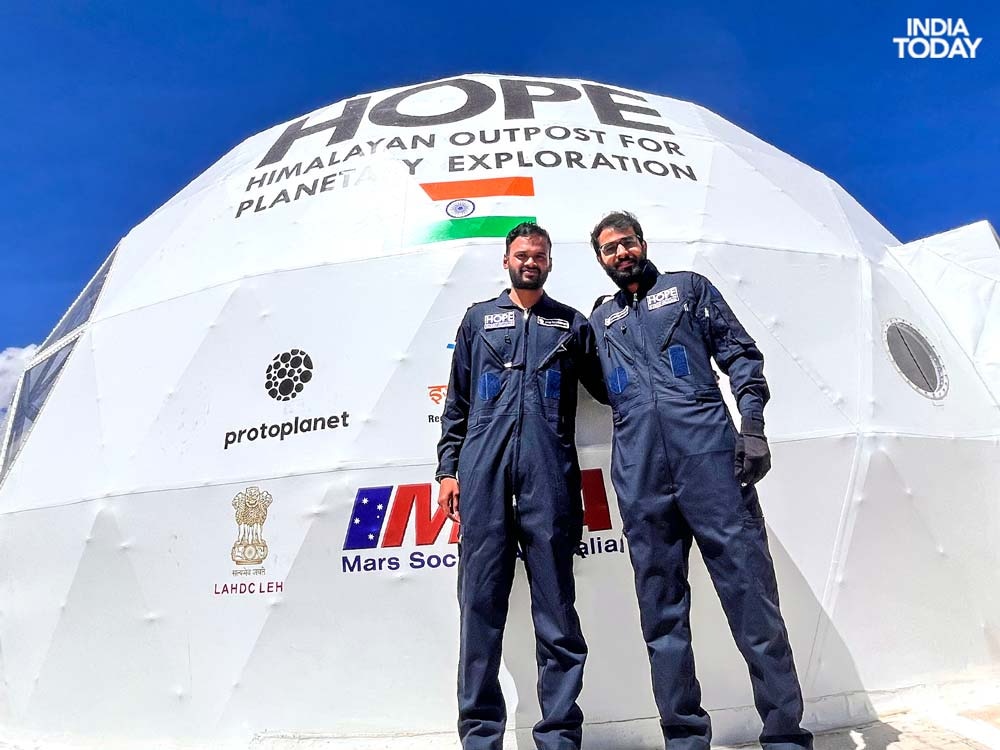
ENTERS INDIA’S FIRST ANALOG ASTRONAUTS
Rahul Mogalapalli and Yaman Akot were selected from over 150 applications received when Protoplanet announced its first analog mission. Both PhD scholars were chosen after a rigorous selection process that included interviews, psychological evaluations, and medical checks in line with Isro’s requirements.
The duo arrived in Ladakh in late July 2025, spending a week acclimatising before moving to the remote Tso Kar valley. On August 1, 2025, they entered their new home — the Mars Habitat — for a 10-day isolation mission.
During their stay, the analog astronauts were completely cut off from the outside world, relying on satellite-based communication with a base team located nearly 30 kilometres away.
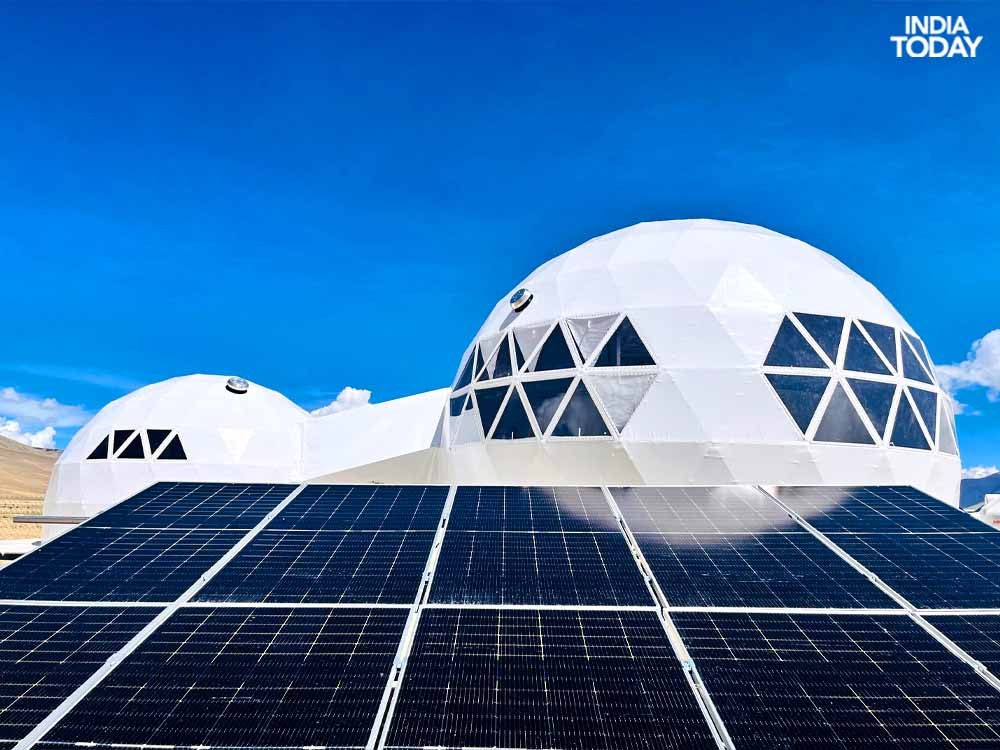
The mission began smoothly, but Tso Kar’s unpredictable weather soon tested them. The habitat endured one of the heaviest rainfalls in years, followed by sudden temperature swings.
On days 7, 8, and 9, the pair conducted extra-vehicular activities (EVAs), collecting quartz rock samples within 500 metres of the habitat for future geological analysis.
Their diet consisted of freeze-dried meals developed by a Bengaluru-based company. Yaman, who hails from Hyderabad, enjoyed the South Indian staples — idli, sambar, and other familiar dishes — while Rahul admitted it took some adjustment, though he eventually developed a taste for them. Recreational options were limited to pre-downloaded music, with social media banned to conserve bandwidth.
On August 11, as they stepped out of the habitat, both praised the simple pleasure of the tea served at the campsite. Soon, Rahul will fly to the US and Yaman to Scotland to complete their doctorates, after debriefing and providing post-mission blood samples.
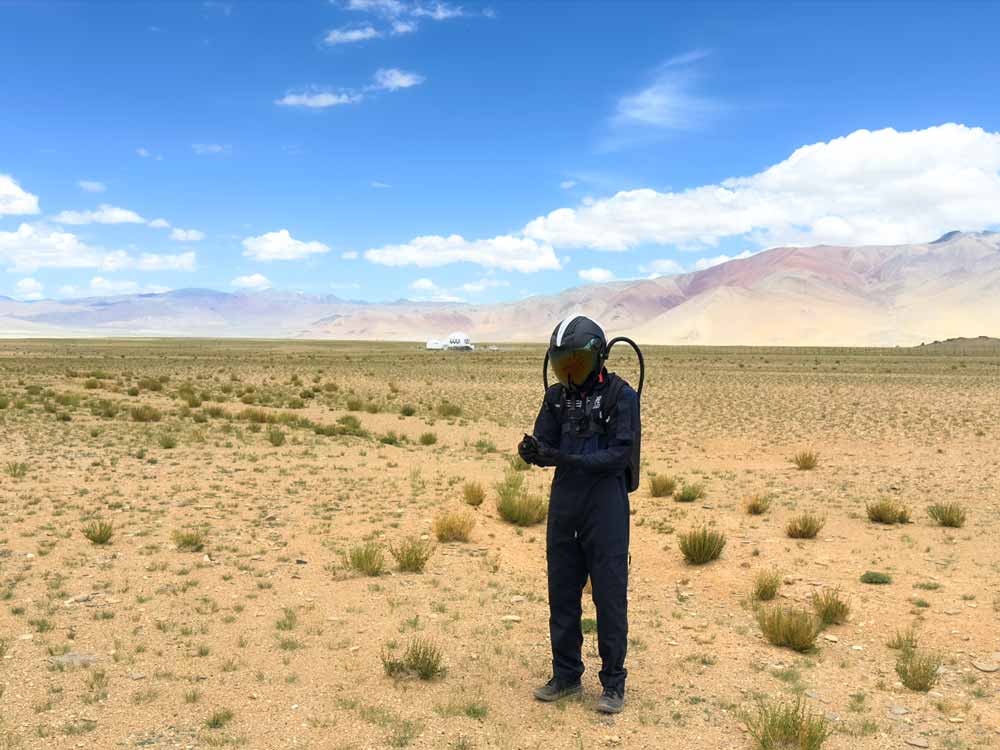
Credits : PROTOPLANET
WHY THE ANALOG MISSION MATTERS
Analog-1 is a critical step in India’s human spaceflight journey, as the country plans to send astronauts to space by 2027 aboard the Gaganyaan Mission and land on the Moon by 2040. The mission aimed to study how isolation, extreme environments, and limited resources affect human physiology and performance.
Palash Kumar Basu, Assistant Professor, Indian Institute of Space Technology, leading a genetic and epigenetic study for the mission, told IndiaToday.in that lab analysis of blood, urine, and breath samples, taken before, during, and after the mission, will reveal how psychological stress and environmental strain impact human genes.
The results, expected in the coming months, will help Isro refine protocols, develop new training modules, and prepare astronauts for the make-or-break moments of deep-space missions that could be the difference between the success and failure of their missions.
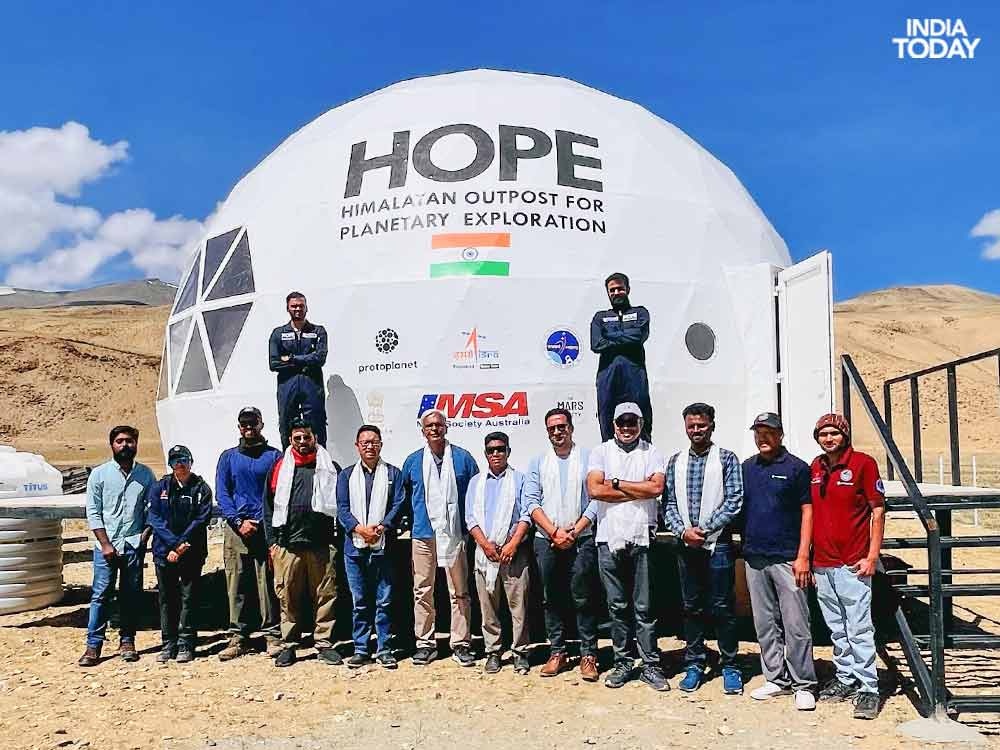
Dr. Robert Zubrin, President and Founder of The Mars Society International, voiced strong support for the program. “Analog stations serve as essential proving grounds for the technologies, protocols, and human factors that will shape future missions to Mars,” he said.
The Hab will now be repurposed as a weather station to collect vital data on climatic variables in the Tso Kar valley, enabling Protoplanet to fine-tune its upcoming Analog-2 mission, slated for April 2026. The team also hopes to host Indian astronauts—participants in the country’s ambitious Gaganyaan Mission—inside the Hab in the near future.
With India positioning itself as a rising force in human space exploration, the Himalayan outpost in Ladakh may prove to be the first rung on the ladder to new worlds beyond our own, bringing humanity one step closer to becoming an interplanetary species.
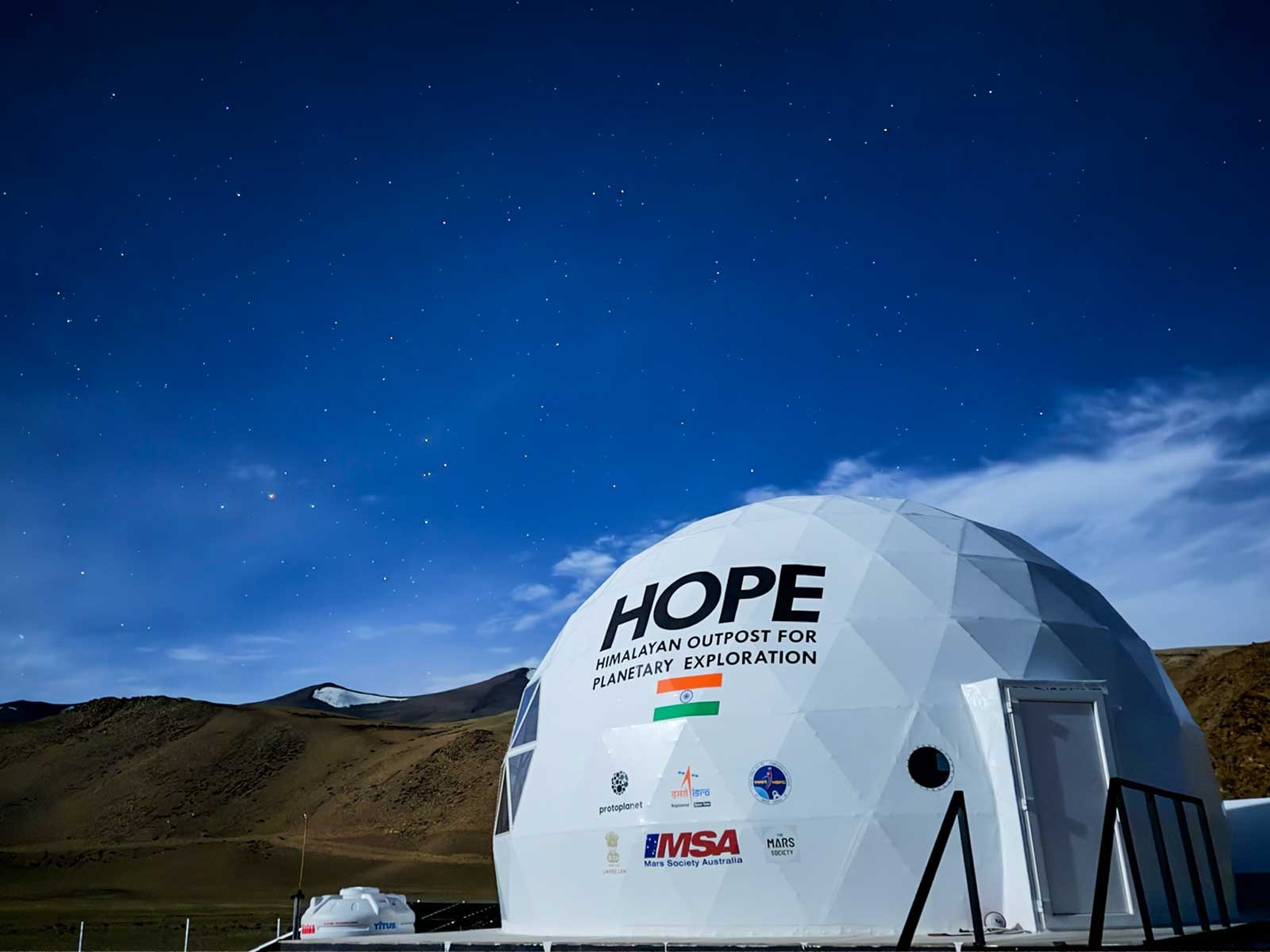
Credits : PROTOPLANET

